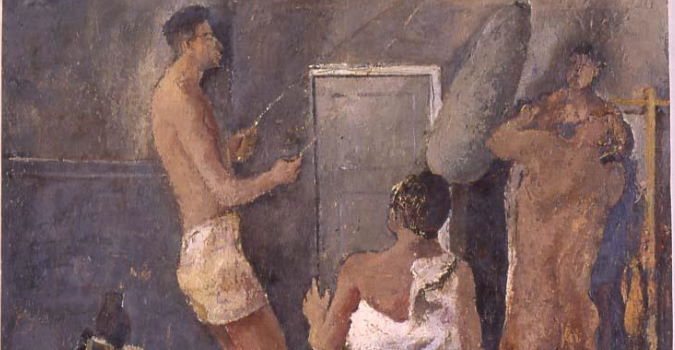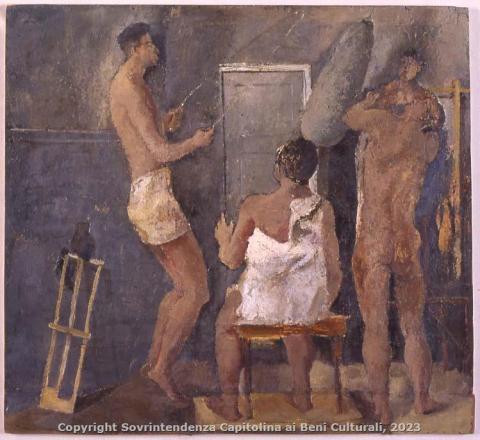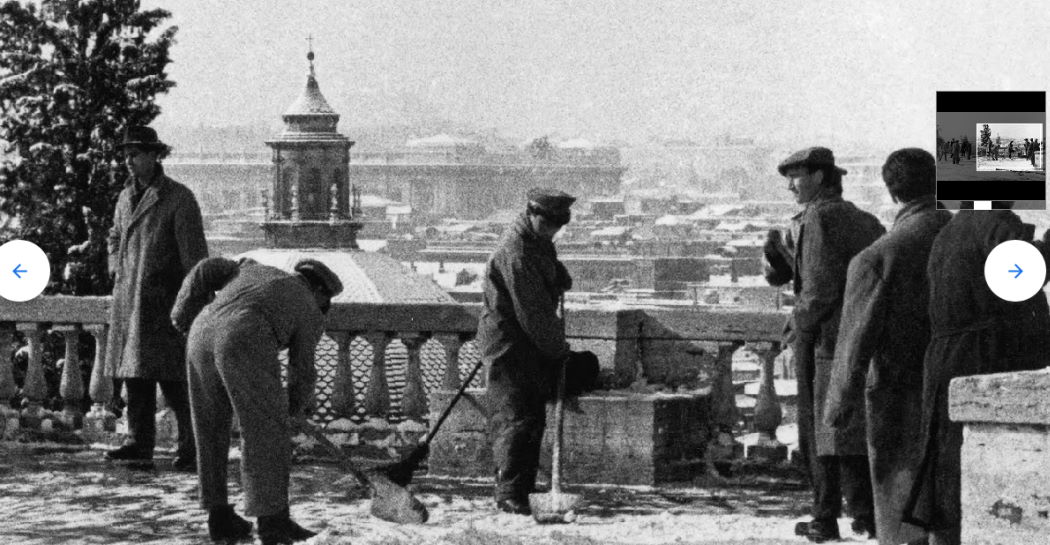The Artwork of the Month - September 2023
Fausto Pirandello
(Roma 1899 - 1975)
Palestra (Gymnasium), 1934-35
Oil on panel, 55 x 59 cm
inv. AM 1064

The painting represents three male figures within an indoor space, on the back wall of which there is a door: the man on the left is jumping rope, the one in the centre is seated with his back turned, while the third figure, on the right, is training with punching-ball; behind him, in the background, a fourth athlete can be glimpsed. The colour palette hinges on modulations of grey, pink and beige, sophisticatedly modulated in a thick, chalky layering, reminiscent of mural painting. It is no coincidence that Melli called Pirandello the 'prince of grey' for his unusual ability to use this colour in a wide range of shades.
In the tight composition, with a narrow cut that touches the edge of the frame, as almost always in Pirandello's work, the self-referentiality of the characters appears total; there seems to be no conversation or emotional contact between them. The result is a thick, dense and suffocating atmosphere, as if of expectation, in which man and environment are confined in a single amalgam.
The subject treated was of particular interest, sporting activity, a recurring theme in those years, also in tune with the athleticism promoted by the regime and culminating, in 1936, in the Prima Mostra Nazionale d'arte sportiva. It was precisely at the second edition of the exhibition, in 1940, that Pirandello participated, winning first prize with Atleti in palestra (1934), a work that bears marked similarities to the one in question. In both cases, Pirandello avoided any declamatory and monumental intonation, moving instead towards a bare, anti-rhetorical and demythologising narrative.
The painting Palestra was presented (and purchased by the Government) in 1935 on the occasion of the II Quadriennale di Roma, where the artist exhibited seventeen works. It was therefore a particularly significant participation for Pirandello who, after his return from Paris, his first Italian solo exhibition at the Galleria di Roma in 1931 and his presence at the 18th and 19th Biennale di Venezia, finally saw his value publicly recognised and received good critical acclaim.
Return to the section > The Galleria d'Arte Moderna artwork of the month






































